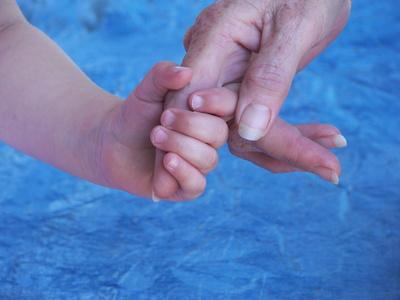Common warts won’t hurt you, but neither are they attractive–either on your own skin or that of your child. Caused by a virus called the human papillomavirus (HPV), common warts are simply a rapid overgrowth of skin cells. Most common warts eventually disappear if you just give them enough time, say doctors at the Mayo Clinic. But when warts cause embarrassment or discomfort, there are ways to rush them along.
Common Warts
Your hands are the perfect place for HPV to take up residence, but common warts can show up anywhere–the face, toes and even beneath the fingernails. Common warts present as small, dome-shaped bumps that are rough in texture. They can vary in color and may be the same color as the rest of your skin, but they can also be white, pink or light brown. You may see one lone riser, but a wart may also bring its friends along, and you may experience them in clusters. Some warts may appear to have a tiny dark dot or “seed” in the center. The Mayo Clinic explains that this is just a small, clotted blood vessel.
For Adults
Over-the-counter (OTC) wart medications that contain salicylic acid can be used to get rid of common warts in the comfort of your own home. The Mayo Clinic advises that regardless if you choose a liquid medication or medicated patch, look for a product that contains at least 17 percent salicylic acid. This remedy won’t make warts go away overnight. Usually, it takes a few weeks of consistent application.
Considerations
If using a salicylic acid-based treatment, soak the wart-afflicted hand in warm water for up to 20 minutes and then applying your medication. Use a nail file or pumice stone to buff gently away the dead skin on the wart. Be careful not to injure the healthy skin around it. You can expect one common side effect–irritation. This means that your wart treatment is getting the job done, states the Mayo Clinic.
For Kids
Children can be fearful of the scarier types of wart treatments doctors provide, such as cryotherapy (freezing the wart with liquid nitrogen). This uncomfortable procedure can easily be foregone if your child is tolerant to the duct tape method, an unorthodox but effective home treatment advocated by both the Mayo Clinic and integrative physician Dr. Andrew Weil, who cites a 2002 study conducted by the Cincinnati Children’s Hospital Medical Center that indicates that duct tape worked even better than cryotherapy.
Duct Tape Method
The duct tape method may be a choice way to treat warts on little fingers and toes. Simply apply a small piece of duct tape, sized to cover the wart. Leave the wart alone for six days, and then remove the tape. You might need to brace yourself for an unpleasant smell. Next, soak the wart in warm water. Use a nail file or pumice stone to gently slough off dead skin. The Cincinnati study had the parents of child participants repeat this treatment for two months, or until the warts went away. Weil indicates that the duct tape method resulted in success in 22 out of 26 children studied.
Cautions
Salicylic acid is not advised for people with weakened immune systems or diabetes. If you are pregnant, consult your doctor before using any type of acid to treat common warts. When it comes to warts, location is also a concern. Warts that crop up on the face or genital region should never be treated at home, cautions the National Institutes of Health (NIH). Warts keep shedding HPV, and the virus can spread to other parts of the body–and to other people, too. If warts run rampant to the point where you cannot get them under control with at-home remedies, see your doctor for treatment.
Photo Credit
- mother and daughter image by Joann Cooper from Fotolia.com





